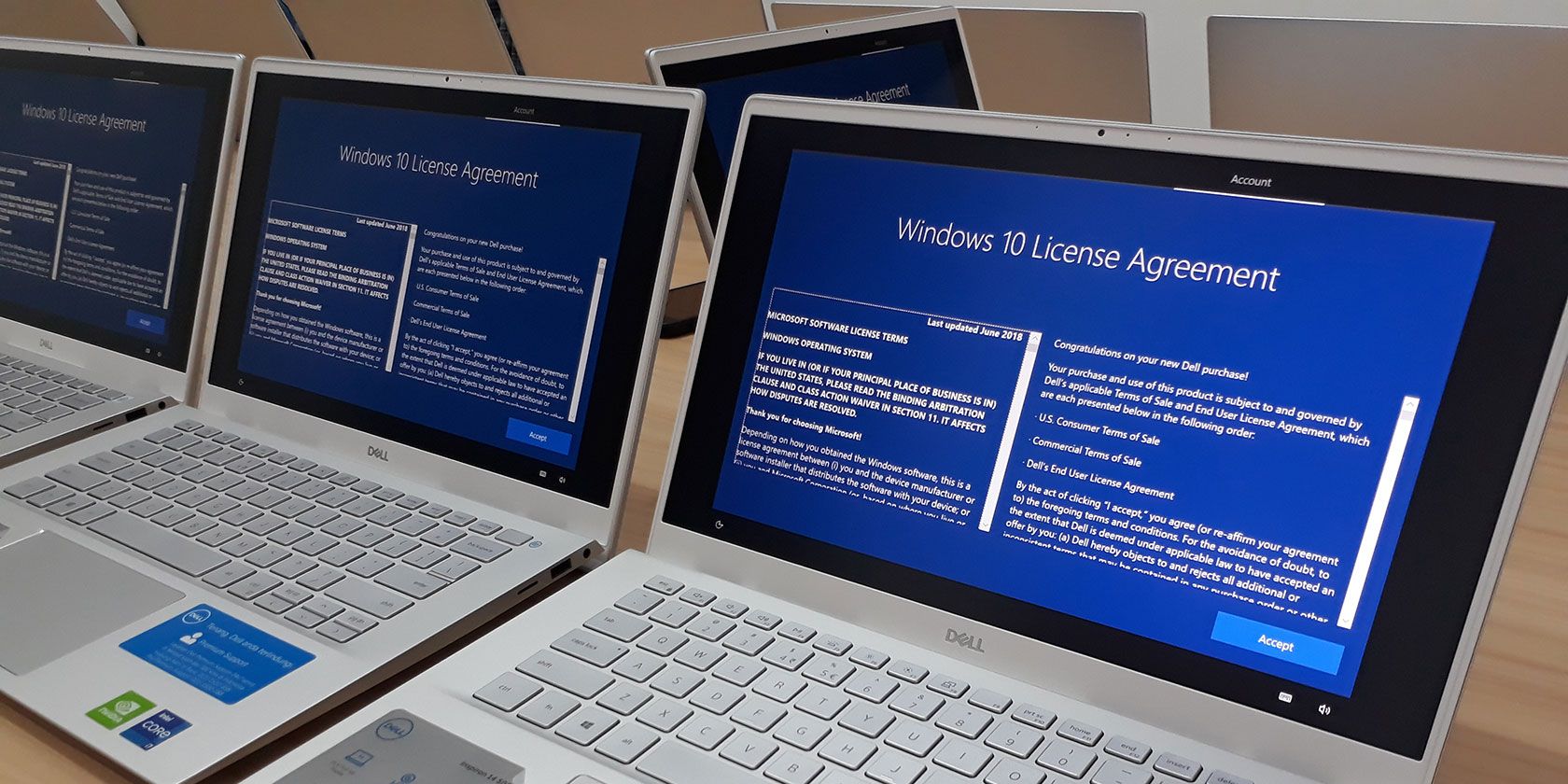
The Race in Silicon Valley: Measuring the Performance Leap From Apple's A16 to A17 Chipset

The Race in Silicon Valley: Measuring the Performance Leap From Apple’s A16 to A17 Chipset
Apple’s introduction of the A17 Pro system-on-chip sees Apple’s chip production move to a newer, smaller process and adds a new GPU core to boot. So what’s the real-world implication of this change?
What is the A16 Bionic?
The A16 Bionic is a system-on-chip introduced by Apple in September 2022 with the launch of the iPhone 14 Pro and Pro Max. Like past chips, the A16 Bionic uses 64-bit ARM-based architecture (like Apple Silicon , but unlike traditional x86 PC processors ).
A system-on-chip (SoC) is an integrated circuit that includes a CPU, GPU, RAM, and other components. In 2023, Apple put the A16 Bionic into its base iPhone 15 and its Plus model, continuing the trend of using last year’s top-tier chip in this year’s non-Pro iPhone model.
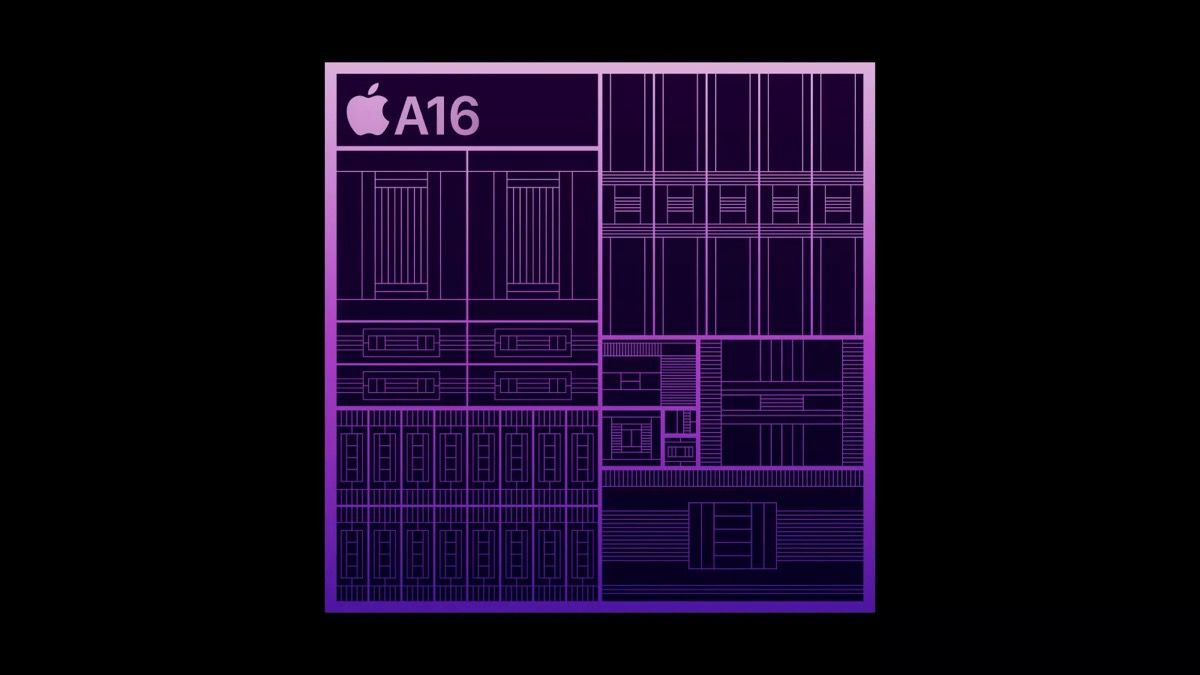
The A16 features six CPU cores with two of them designed for high performance (clocked at just short of 3.5GHz) and four efficiency cores (running at just over 2GHz) for general compute tasks. These cores do most of the “thinking” on an iPhone, including handling background tasks, with the efficiency cores designed to preserve power and extend battery life.
On top of this, the A16 Bionic features five GPU cores running at just short of 1.4GHz, which handle graphics-intensive tasks including 3D gaming and visual effects like iOS transparency. There’s also Apple’s 16-core neural engine for machine learning tasks like identifying faces and objects in your Photos library. The A16 Bionic is equipped with 6GB of RAM and features 16 billion transistors.
The A16 Bionic introduced a new image signal processor (ISP) to improve computational photography abilities. This means better processing of images coming from the camera, resulting in less noise and ultimately better images.
Apple claimed that the A16 Bionic was the first 4-nanometer chip in a smartphone, a term that refers to the size of the transistors. Analysts discovered this is up for debate and that the chip was manufactured on a slightly improved 5nm process (known internally by chip manufacturer TSMC as N4P).
What is the A17 Pro?
The A17 Pro is an updated system-on-chip that first made its way into the iPhone 15 Pro and Pro Max in 2023. It too uses the same ARM-based architecture, but performance is slightly improved with its six-core CPU featuring two performance cores running at just shy of 3.8GHz and four efficiency cores hitting 2.1GHz.
The A17 Pro also ups the total RAM included on the SoC to 8GB, from 6GB last time around.
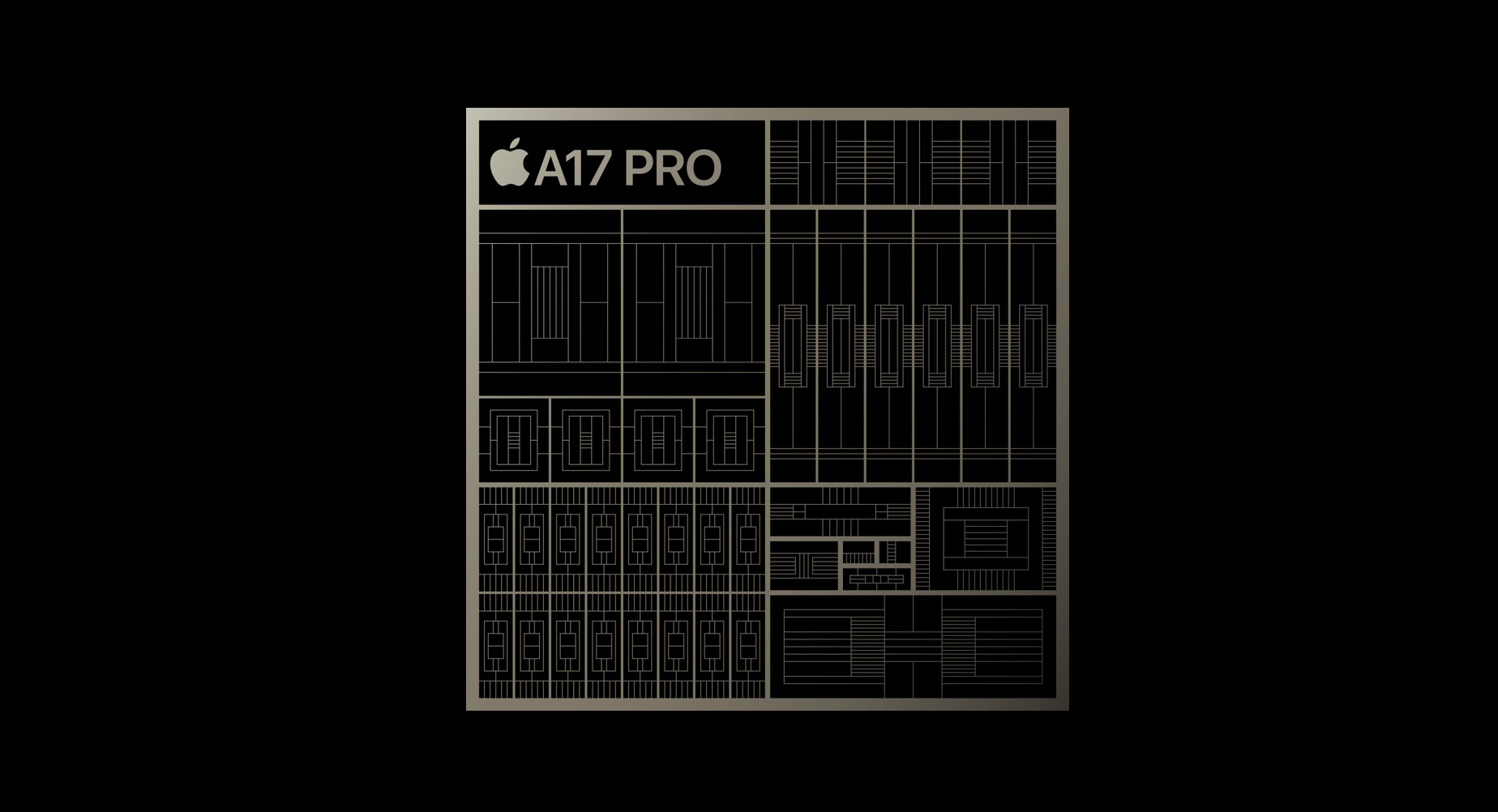
Apple also improved the GPU, adding an additional GPU core for a total of six cores with Apple claiming a 20% improvement over the A16 Bionic and support for hardware ray tracing and better shading for improved handling of realistic lighting effects in 3D applications.
Apple boosted the transistor count to 19 billion and added hardware support for AV1 decoding, a video codec that’s set to one day replace HEVC . The A17 Pro is manufactured using TSMC’s N3B process, which is considered to produce “true” 3-nanometer chips .
How Much Better is the A17 Pro?
Apple only claimed a 10% improvement in CPU speed over the A16 Bionic when introducing the A17 Pro, and according to many of the benchmarks, this happens to be the case.
Taking a look at the iPhone 15 Pro Geekbench single-core score shows an improvement from 2540 on the A16 Bionic to 2890 on the A17 Pro, while multi-core scores go from 6420 to 7159 respectively. More impressive at the Metal scores, which measure GPU performance and corroborate Apple’s claim of 20% taking scores from 22574 on the A16 Bionic to 27074 on the A17 Pro.
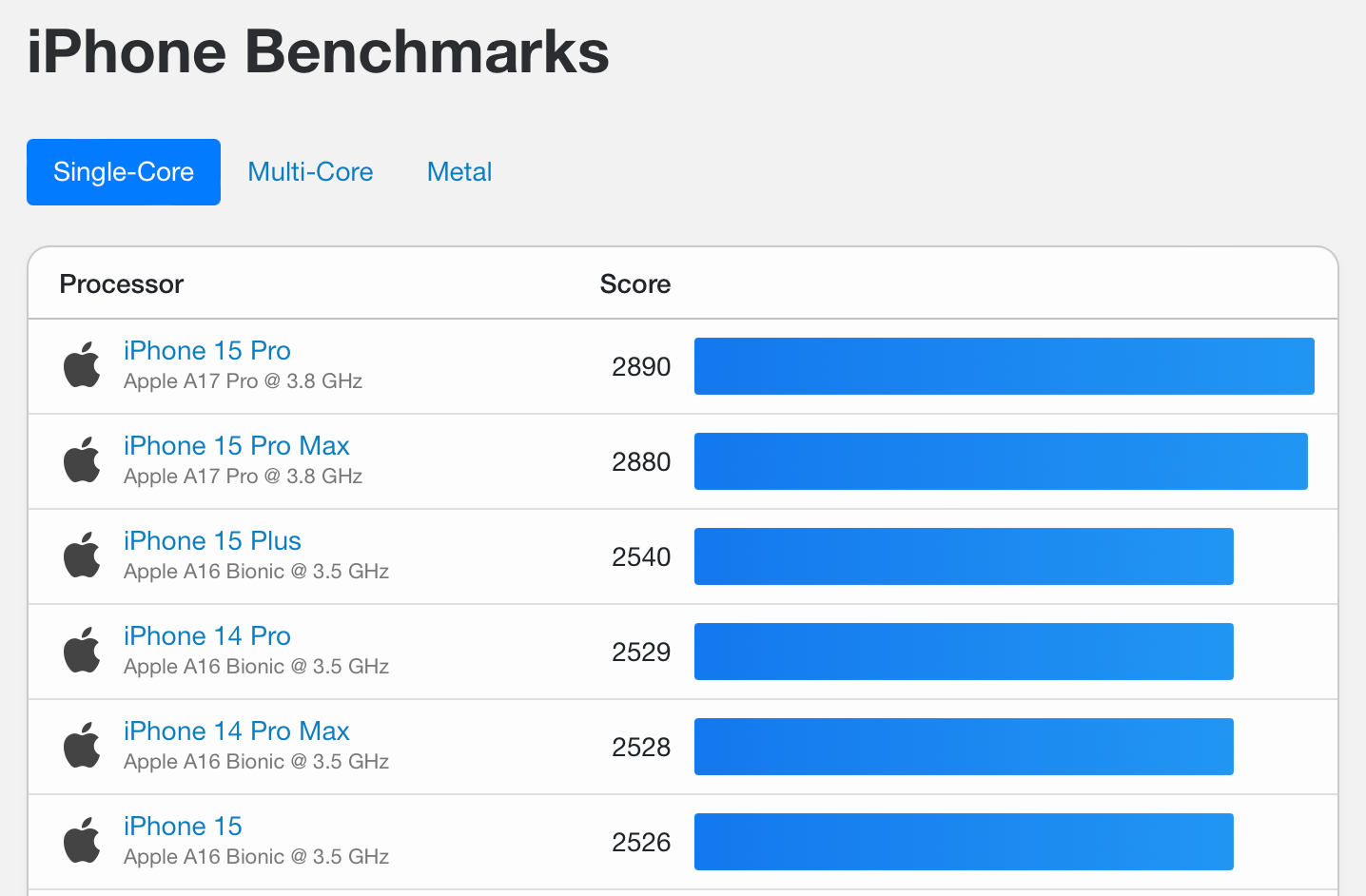
Geekbench
Tom’s Guide produced a set of benchmarks that compare not only Geekbench but some real-world tests like transcoding 4K video to 1080p in Adobe Premier Rush. This saw the A17 Pro shave anywhere from two to six seconds off the best A16 Bionic scores.
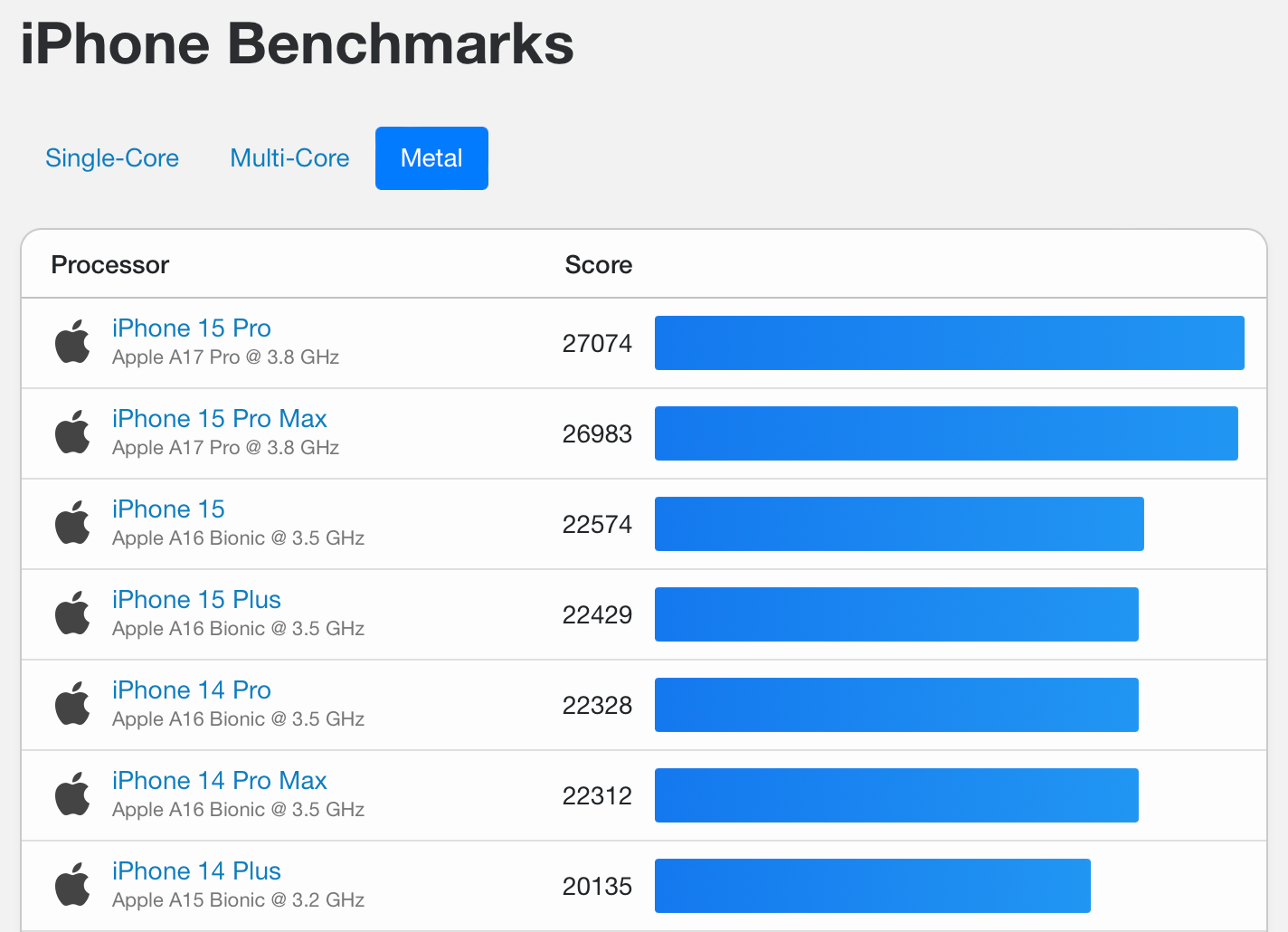
Geekbench
Keep in mind that benchmarks don’t always coincide with real-world usage. There will be some variance in scores purely down to the way that chip tolerances work. Not all silicon is the same, there are differences in different batches of chips and that explains the ever-fluctuating scores.
Does the A17 Pro Make the iPhone 15 Pro Worth It?
If you’re wondering if you should upgrade from the iPhone 14 Pro to the iPhone 15 Pro purely for a speed bump, the answer is probably not. If you play a lot of 3D games then you might see things differently. The GPU improvements will yield a performance bump, and Apple’s plan of bringing “AAA” games like Resident Evil: Village to mobile will require either an iPhone 15 Pro or iPad with an M1 chip .
That said, if you’re serious about gaming then it’s likely that you already have a console or a PC that can handle these games. On a large screen like a TV or a monitor you’ll be able to enjoy these games at higher resolution, even if you depend partly on upscaling methods like NVIDIA’s DLSS .
The A16 Bionic is still a highly performant chip, as indicated by its inclusion in 2023’s iPhone 15 and iPhone 15 Plus models. The A17 Pro is at the cutting edge, which is why it makes it into Apple’s top-tier “halo” line. If you’re coming from an older device then you are far more likely to notice a performance improvement, but the same is true whether you go for the Pro or the standard model.
If you’re looking for a reason to upgrade, we’d point to more tangible benefits like the 5x optical zoom featured in the iPhone 15 Pro Max, the Action button that replaces the ring/silent switch, and the inclusion of USB-C for charging and data transfer.
The A17 Pro is Apple’s First 3nm Chip
The A17 Pro breaks new ground as Apple’s first 3-nanometer chip. The number refers to the size of the individual transistors featured on the chip. In essence, the smaller the transistors the more of them you can fit on a chip. This is evident by Apple adding three billion more transistors to the A17 Pro (at 19 billion) compared to the A16 Bionic (at 16 billion).
Not only does this improve performance by allowing more operations per second, but it also improves the efficiency of the chips. You can’t always have it both ways, however, so efficiency is often traded off against performance. This results in chips that are faster year-on-year and maintain the same levels of efficiency as their predecessors.
In reality, you don’t need to worry about this number at all. All it really signals is an improvement in chip fabrication that will eventually trickle down to all models of iPhone (and other devices), whether you spend big on an iPhone Pro now or a standard iPhone in a few years.
Buy the iPhone You’re Happy With (Or Don’t)
If you want to spend on a brand new iPhone Pro to get the latest features, a titanium body, USB-C, and the A17 Pro then go for it. But for most, sticking to a more reasonable update cycle of updating your iPhone as you “need” to is the best bet. This might be when you notice you’re waiting for longer than you’d like, when the battery life deteriorates, or when you fancy a camera upgrade.
Read more about whether the upgrade to iPhone 15 is worth it . You can even add the iPhone 15 Pro’s Action button to your old iPhone if you want !
Also read:
- [Updated] In 2024, Delving Into the Realm of Yi's Action Video Potential
- [Updated] The Nexus of Playfulness for Young Gamers
- 1. Logitech Combo Touch Evaluation: An Ideal Substitute for the Apple iPad's Input Device
- 1. Mastering Alert Settings: A Guide to Controlling Your iOS Device Notifications
- 2024 Approved How to Create a Sports Highlight Video - a Simple Guide
- 2024 Approved IFunny Memes Unlocked Download & Use in a Flash
- A Comprehensive Guide: Utilizing the Apple Watch for Enhanced Sleep Analysis
- Access iPhone's Covert Rain Sounds: A Guide to Improving Your Sleep Quality
- Apple Watch: A Must-Have Companion for Athlete Recovery and Downtime
- Boost Your iPhone's Recording Quality with 8 Amazing Free Tips!
- In 2024, Four Streaming Ways to Showcase FB Live Events on TV
- In 2024, Proven Ways in How To Hide Location on Life360 For Oppo K11x | Dr.fone
- In 2024, Tips and Tricks for Setting Up your Honor Magic5 Ultimate Phone Pattern Lock
- The Ultimate Guide: Best Notetaking Apps for Apple's iPad Family
- Why You Shouldn't Ignore Adding Emergency Contacts to Your Apple Phone and How to Do It!
- Title: The Race in Silicon Valley: Measuring the Performance Leap From Apple's A16 to A17 Chipset
- Author: Daniel
- Created at : 2024-10-01 16:41:37
- Updated at : 2024-10-06 16:43:13
- Link: https://os-tips.techidaily.com/the-race-in-silicon-valley-measuring-the-performance-leap-from-apples-a16-to-a17-chipset/
- License: This work is licensed under CC BY-NC-SA 4.0.